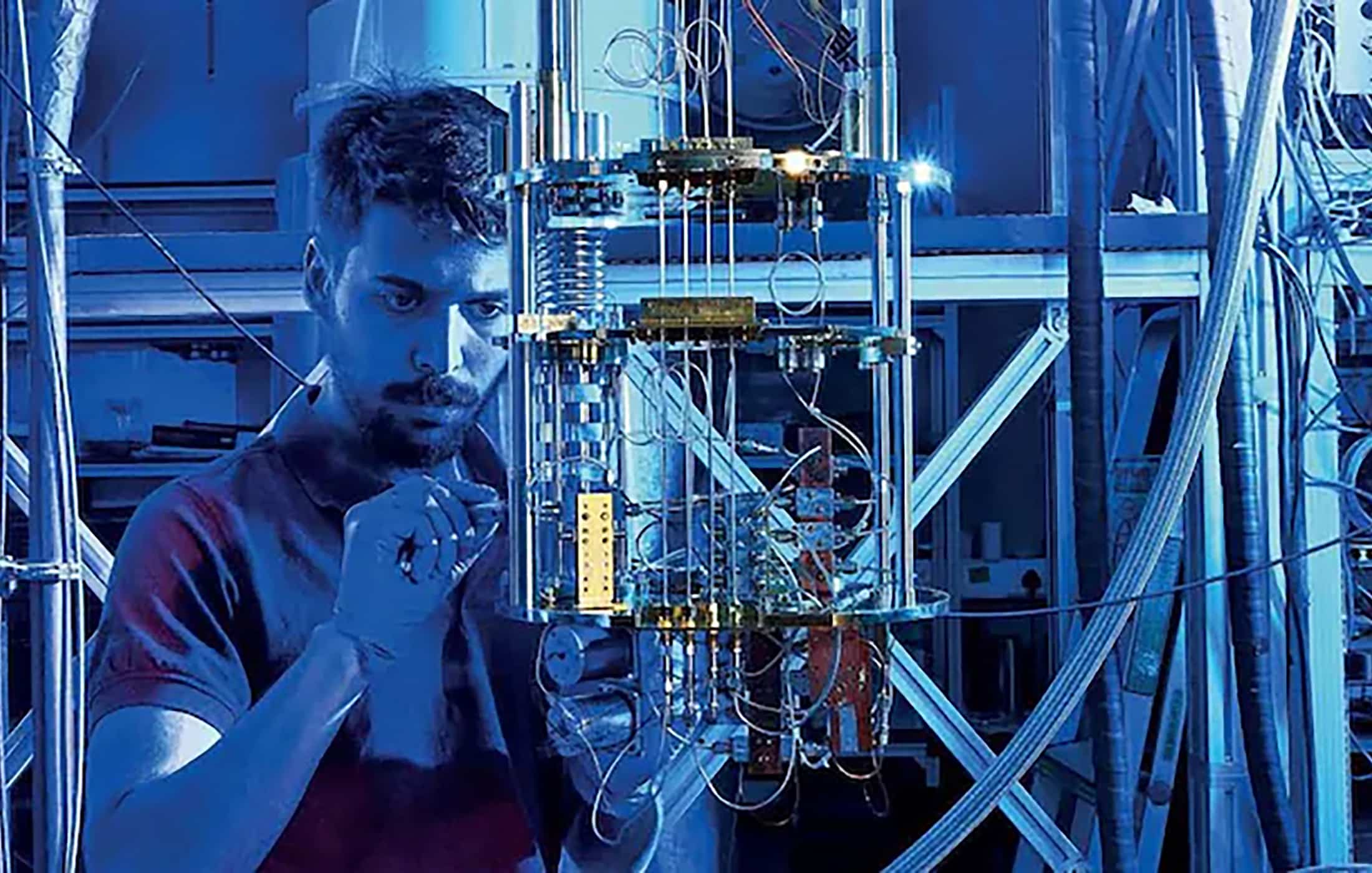India Tests First Indigenous 6-Qubit Quantum Processor

India has achieved a significant quantum computing milestone with its first successful test of a homegrown 6-qubit superconducting quantum processor. A team of scientists from the Defence Research and Development Organisation (DRDO), Tata Institute of Fundamental Research (TIFR), and Tata Consultancy Services (TCS) completed end-to-end testing of the 6-qubit device, marking a major step in India’s quantum research efforts. This prototype – the country’s first quantum chip based on superconducting circuits – demonstrates India’s entry into the quantum hardware arena, a field dominated so far by only a few nations.
A Milestone for India’s Quantum Computing Program
The successful test involved running quantum circuits on the indigenous processor through a cloud platform, demonstrating full stack integration. Researchers submitted a quantum program via a cloud interface, which was executed on the cryogenic 6-qubit hardware in real-time, and the results were sent back to the user – an end-to-end demonstration of a working quantum computing system. Notably, all key components were developed in India: the qubits were designed and fabricated at TIFR’s Mumbai lab, using a novel ring-resonator architecture invented by TIFR scientists. The control electronics and software stack were assembled by DRDO’s Young Scientists Laboratory for Quantum Technologies (DYSL-QT) in Pune with help from TCS, illustrating a collaborative effort between defense labs, academia, and industry.
Key features of the 6-qubit quantum processor include:
- Superconducting Qubit Design: The processor uses superconducting circuit technology, making it the first of its kind to be designed and tested in India. Superconducting qubits are the same approach used by leading quantum computing firms globally, underscoring the significance of India developing this technology domestically.
- End-to-End Functionality: The team demonstrated the chip’s functionality via a cloud-based interface – a user could send a quantum circuit to the processor, have it run on the 6-qubit hardware, and receive the output, thereby showcasing a fully integrated quantum computing workflow. This indicates that the Indian prototype isn’t just a isolated chip in a lab, but part of a usable quantum computing setup (albeit on a small scale).
- Indigenous Innovation: The 6-qubit device features a novel ring-resonator qubit architecture developed by TIFR, highlighting indigenous R&D. The qubit chips were fabricated in India’s own facilities, an important step toward self-reliance in a field where most hardware is imported or built abroad.
- Collaboration and Talent Development: The project was a collaboration between DRDO’s DYSL-QT lab, TIFR, and TCS. It was notably driven by young scientists under DRDO, indicating a focus on building domestic expertise. The successful test validates the research infrastructure India has been putting in place for quantum technology.
- Next Steps – Scaling Up: Having proven that a 6-qubit quantum computer can be built and operated in India, the team is now focused on improving the system’s performance and scaling up the qubit count. Plans are underway to increase the number of qubits and eventually provide cloud access to this quantum processor for educational institutions, researchers, and even commercial users for testing algorithms. In other words, the 6-qubit chip is a starting point, with higher-capacity versions envisioned in the near future as the technology matures.
While this 6-qubit breakthrough is a proud first for India, it comes at a time when other countries have already made strides in quantum computing – some with much larger processors. India’s device is modest in size next to the cutting-edge systems elsewhere, but it mirrors the early milestones that many nations hit on their path to more powerful quantum machines.
This breakthrough did not happen in isolation – it comes amid a broader quantum technology push by the Indian government in recent years. In April 2023, the Union Cabinet approved the National Quantum Mission (NQM), India’s first national-level program dedicated to quantum science and technology. Backed by a funding outlay of ₹6,003 crore (approximately $725 million) for the period 2023–2031, the NQM’s goal is to seed and grow a vibrant research and industrial ecosystem in quantum technology. Under this mission, India aims to develop intermediate-scale quantum computers with 50–1000 physical qubits over the next 8 years, across multiple platforms (such as superconducting, photonic, and ion-trap). In addition, the NQM is tasked with creating secure quantum communication networks – including satellite-based links and a countrywide quantum key distribution network spanning up to 2,000 km – as well as advanced quantum sensors, metrology devices, and materials. To execute these goals, the plan is to establish four Thematic Hubs at leading institutions, focused on Quantum Computing, Quantum Communication, Quantum Sensing & Metrology, and Quantum Materials & Devices respectively. This mission places India among the handful of nations with a dedicated, well-funded program to advance quantum technologies at a national scale.
Even before this mission, Indian defense and research agencies had begun laying groundwork in quantum R&D. DRDO in particular has been investing in quantum encryption and communications technologies crucial for future-proof security. In February 2022, a joint team from DRDO and IIT Delhi successfully demonstrated India’s first Quantum Key Distribution (QKD) link between two cities – transmitting quantum-encrypted keys between Prayagraj and Vindhyachal (in Uttar Pradesh) over a standard optical fiber spanning more than 100 km. This was a notable achievement in quantum-secure communication, proving that Indian labs could implement quantum cryptography in real-world conditions. A year prior, in 2021, DRDO’s Young Scientist Lab (DYSL-QT) had developed an indigenous Quantum Random Number Generator (QRNG) – a device that uses quantum optical effects to produce truly random numbers for encryption purposes. The QRNG prototype, which passed global randomness test standards at 150 kbps throughput, was among the first such homebuilt devices in the world and underscored India’s intent to develop critical quantum sub-systems domestically. These projects – a quantum-safe communications demo and a quantum random number generator – complement the development of quantum processors, as both secure communications and high-quality random numbers are essential applications of quantum technology (especially for defense and cybersecurity).
India’s academic institutions and startups are also increasingly involved in the quantum effort. The Department of Science & Technology had launched a Quantum-Enabled Science & Technology (QuEST) program in 2018 to fund basic research, and today initiatives like I-Hub Quantum Technology at IISER Pune are incubating quantum tech startups. In late 2024, the government announced support for a first batch of eight quantum startups under the NQM framework, focusing on areas ranging from quantum communication to superconducting qubit systems. This growing ecosystem – spanning government R&D, academia, and industry – provides a strong backing for projects like the DRDO-TIFR 6-qubit processor.
Looking Ahead
The successful test of the 6-qubit superconducting quantum processor is a small but crucial step for India’s quantum computing ambitions. It demonstrates that Indian scientists can design, fabricate, and operate advanced quantum hardware on native soil. In global terms, a 6-qubit device is still far from challenging the quantum computers built in the US or China, but it is exactly the sort of foundational step those nations took a decade ago on their way to much larger machines. The lessons learned from this prototype – in qubit fabrication, noise control, cryogenics, and quantum software integration – will inform the development of bigger Indian quantum processors in the coming years. Under the National Quantum Mission, India plans to steadily increase qubit counts and develop a full range of quantum technologies by 2031. If successful, India could within a few years have its own 20-qubit and 50-qubit machines, moving into the same league as other quantum-enabled nations. For now, India’s first indigenous quantum processor stands as a proof-of-concept that the country is entering the quantum computing race.



